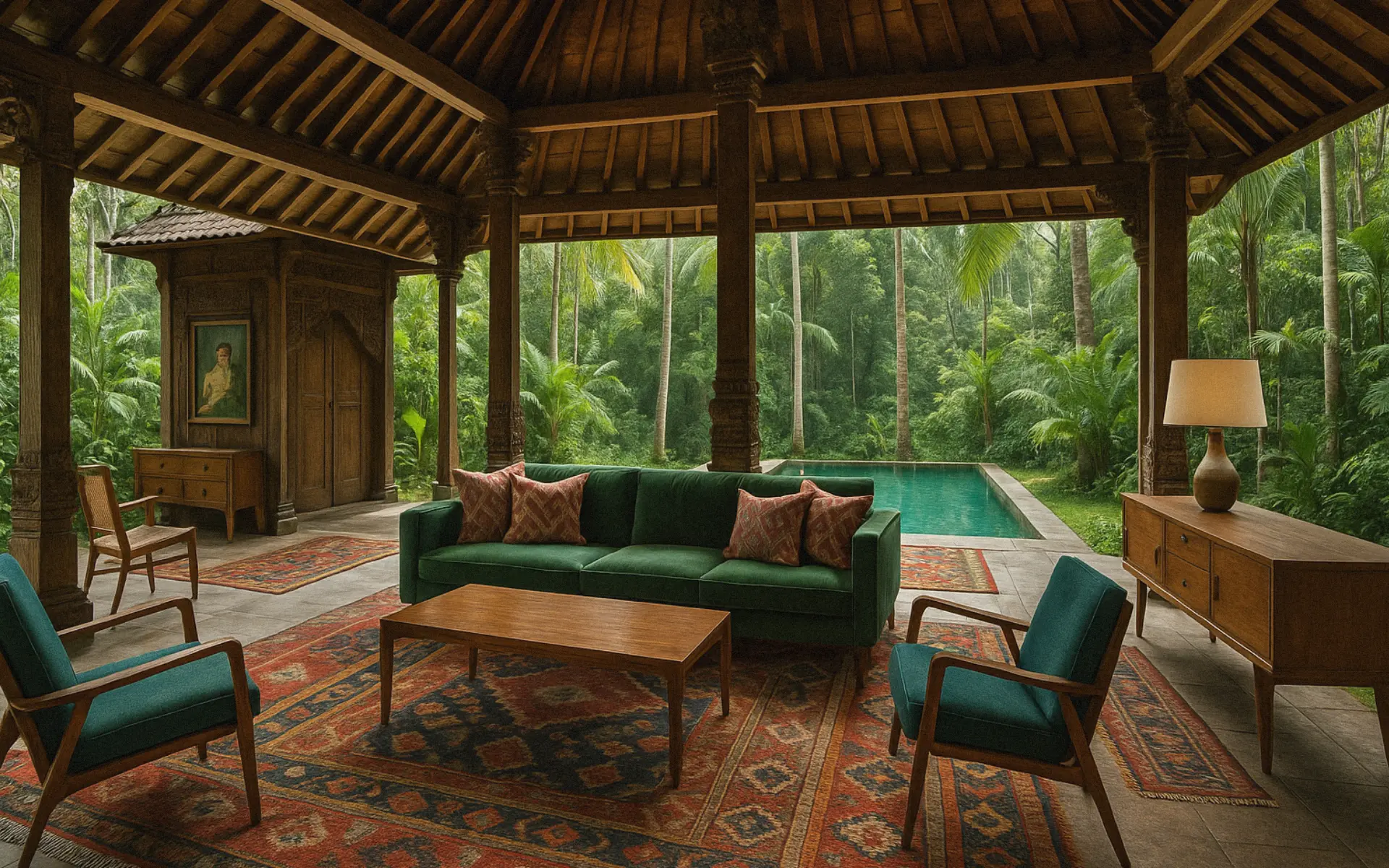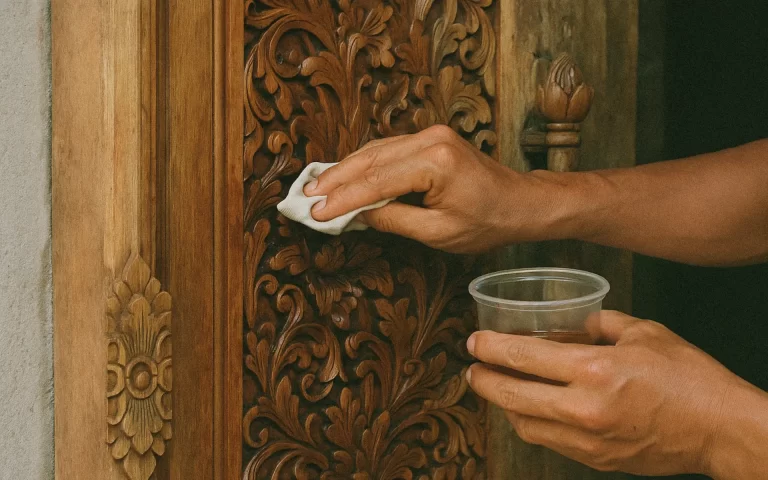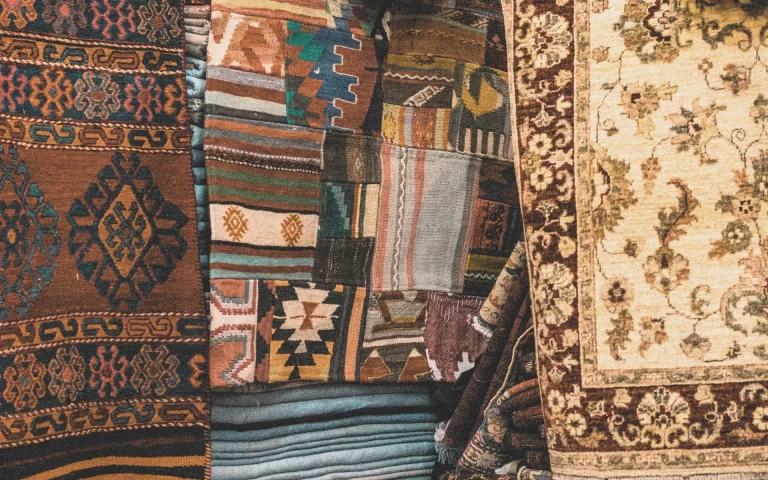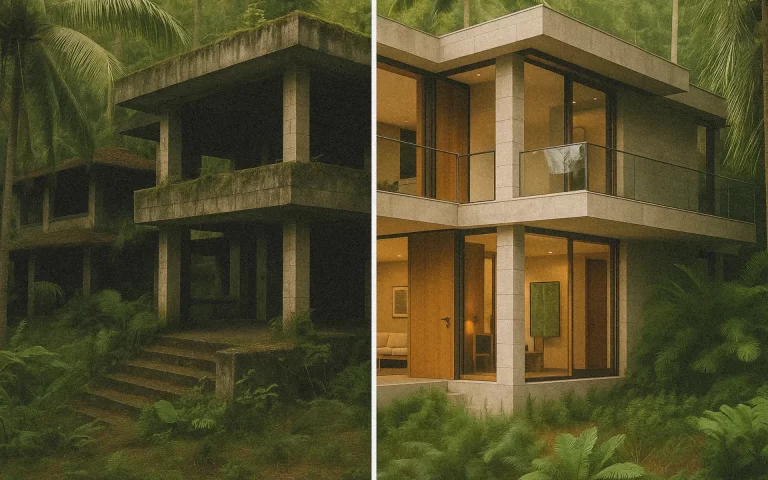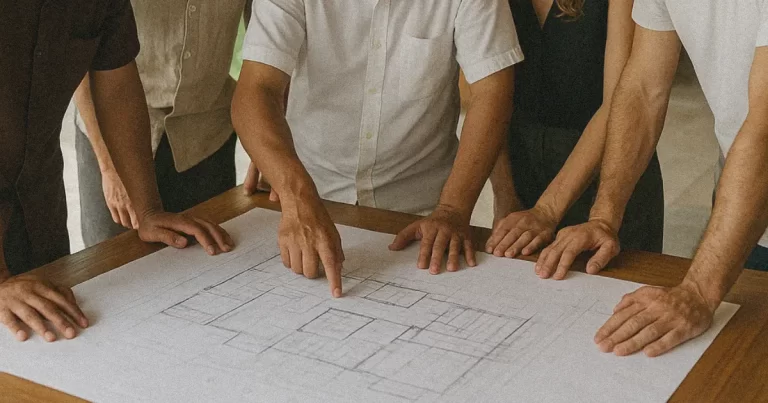Heads-up: A joglo isn’t just a roof — it’s living history.
If you’re thinking of sourcing one, team up with the right people: local architects, heritage restoration experts, and suppliers who know their craft. This guide is here to spark ideas and point you in the right direction — the adventure (and the sourcing road trips) are all yours.
You’ll know it when you see it – that impossibly elegant roofline, curved like a cresting wave. The joglo is more than a roof; it’s an architectural philosophy, a spiritual anchor, and for decades, the soulful heart of some of Bali’s most beautiful homes.
But they’re getting harder to find. Big white Mediterranean villas and multi-storey concrete boxes are taking over, ignoring everything that makes Bali’s traditional architecture so compelling. The joglo’s quiet magic is worth fighting for.
So where do you actually find one worth having? How do you tell authentic from fake? And what are your options — from reputable Bali dealers to the ultimate Java sourcing adventure?
Consider this your complete guide to bringing home a piece of living history.
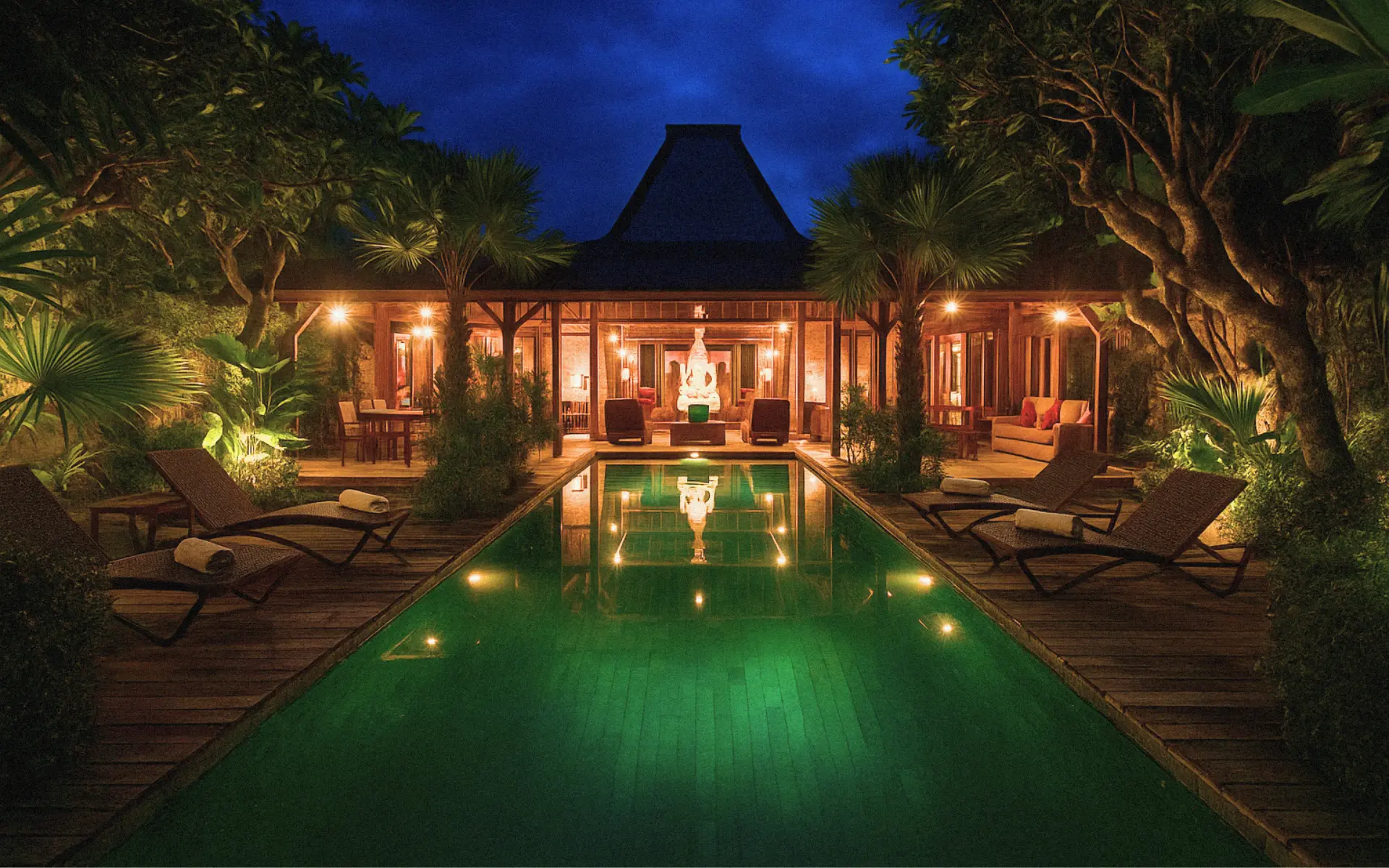
What is a Joglo — and Why is Everyone Obsessed?
A joglo is a traditional Javanese structure that once housed aristocrats and royalty. Defined by its soaring, tiered roof and supported by intricately carved teak columns, the joglo is built around principles of cosmic balance and sacred geometry. The central pillar, known as the saka guru, anchors the entire space, both structurally and spiritually.
In Bali, joglos have found new life — often reimagined as open-plan living rooms, airy kitchens, or even dramatic bedrooms. Their blend of heritage, artistry, and weathered soul adds a layer of authenticity and depth that no modern design can replicate.
It’s not just nostalgia. It’s timelessness.
Authentic vs. Mass-Produced — What to Look For
Not all joglos are created equal. Demand has exploded, and so have the knockoffs — built fast with young wood and zero soul.
Here’s how to spot the real deal: Start with the wood. Authentic joglos use aged teak, often 80+ years old, with that deep honey patina you can’t fake. The newer versions? They’ll use suar or merbau that looks fine but won’t age the same way.
Then check the carving work, especially around the tumpang sari — that layered ceiling feature at the center. Hand-carved pieces have irregularities, weathering, character. Machine-carved replicas look too perfect, too uniform.
And here’s the big tell: traditional joglos don’t use a single nail. Everything’s held together with interlocking joints and wooden pegs. If you see screws or glue, walk away.
Most importantly, ask for the story. Where did it come from? How old is it? A good dealer — whether in Bali or Java — will have photos of it standing in someone’s courtyard before they took it apart. No story usually means no authenticity.
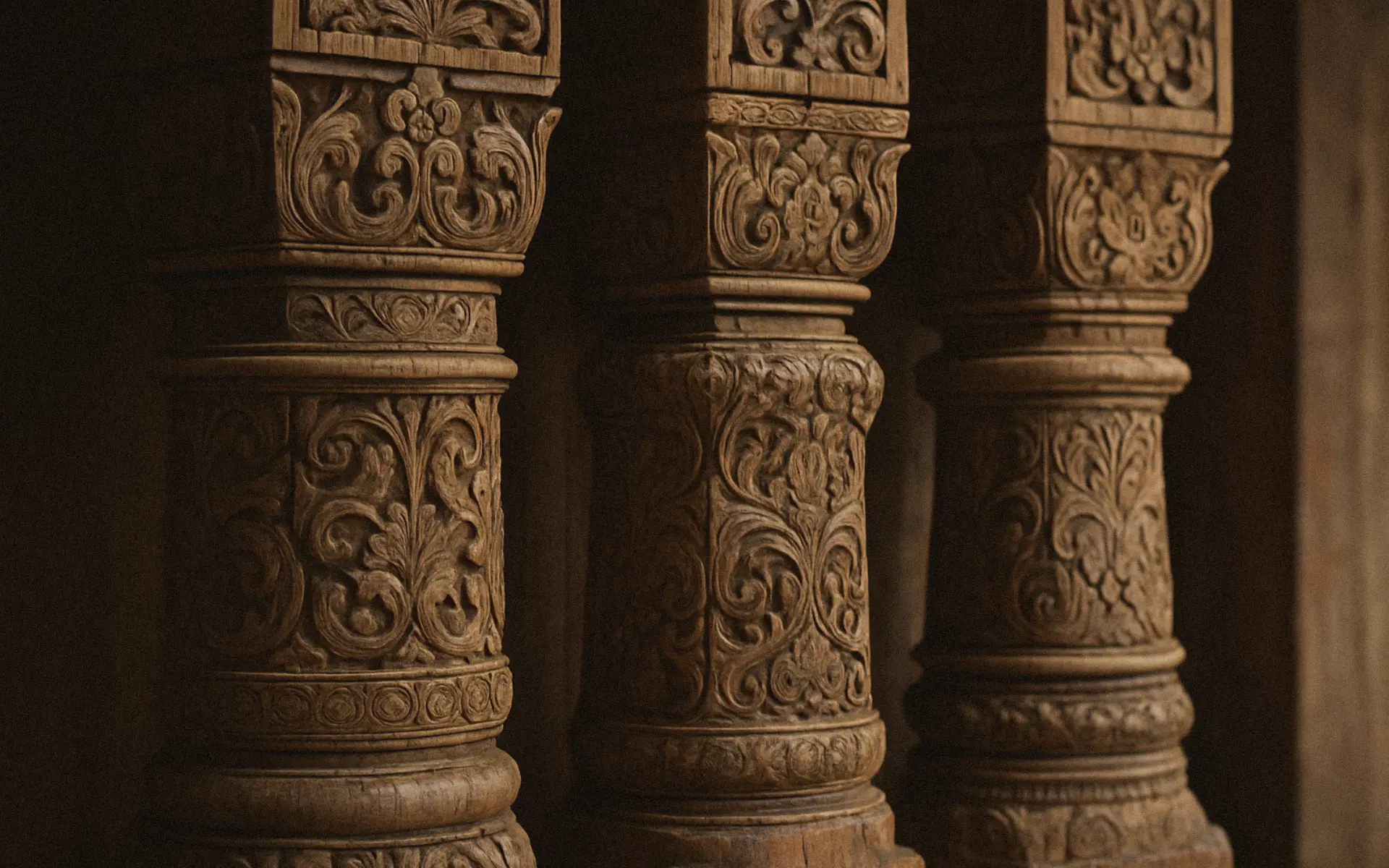
Your Sourcing Options: From Local to Adventure
Finding Quality Joglos in Bali
You don’t have to cross the Java Sea to find an authentic joglo. Several established Bali dealers specialize in sourcing and importing these structures, often with decades-long relationships with Javanese suppliers.
What to look for in a Bali-based dealer:
- Established track record with architects and high-end projects
- Photo documentation of each joglo’s original location and condition
- Restoration expertise — they should understand both preservation and adaptation
- Transparent pricing that breaks down structure, restoration, and installation costs
The advantage? They handle the logistics, customs, and often have joglos already in various stages of restoration. You can see exactly what you’re getting before committing.
Going Straight to the Source: The Java Adventure
For the ultimate experience (and potentially the best selection), there’s nothing quite like sourcing a joglo yourself in Java. The most trusted suppliers aren’t online or on Instagram — they’re in small villages across Central Java, in places like Jepara, Kudus, and Solo, where families have been dealing in reclaimed structures for generations.
Jepara is especially known for its artisans and furniture workshops. If you’re up for the adventure, this is where your road trip should begin. Bring a translator, or better yet, a local architect or contractor with joglo experience. Language, negotiation, and technical expertise all matter here.
Many joglos are still dismantled manually, on-site, by teams who know how to preserve each beam. Some suppliers even offer guided sourcing trips, complete with restoration studios and shipping logistics built in.
The Java route takes more time and planning, but you’ll have access to pieces that might never make it to Bali dealers — and you’ll come home with stories worth telling.
Transporting and Rebuilding
Whether sourced locally or from Java, joglos arrive like ancient flat packs — dismantled, bundled, labeled, and ready for reconstruction. If coming from Java, they typically travel via ferry from Banyuwangi to Gilimanuk, then truck to your build site.
Once delivered, they need a skilled team to put them back together. This isn’t something every contractor knows how to do. Mistakes during reassembly can compromise both structure and beauty.
Key considerations: Termite treatment is essential, even for teak. You may need reinforcements to meet local building codes. Allow seasoning time for the wood to adjust to Bali’s humidity. And remember — joglos don’t fit standard architectural footprints, so plan your site accordingly.
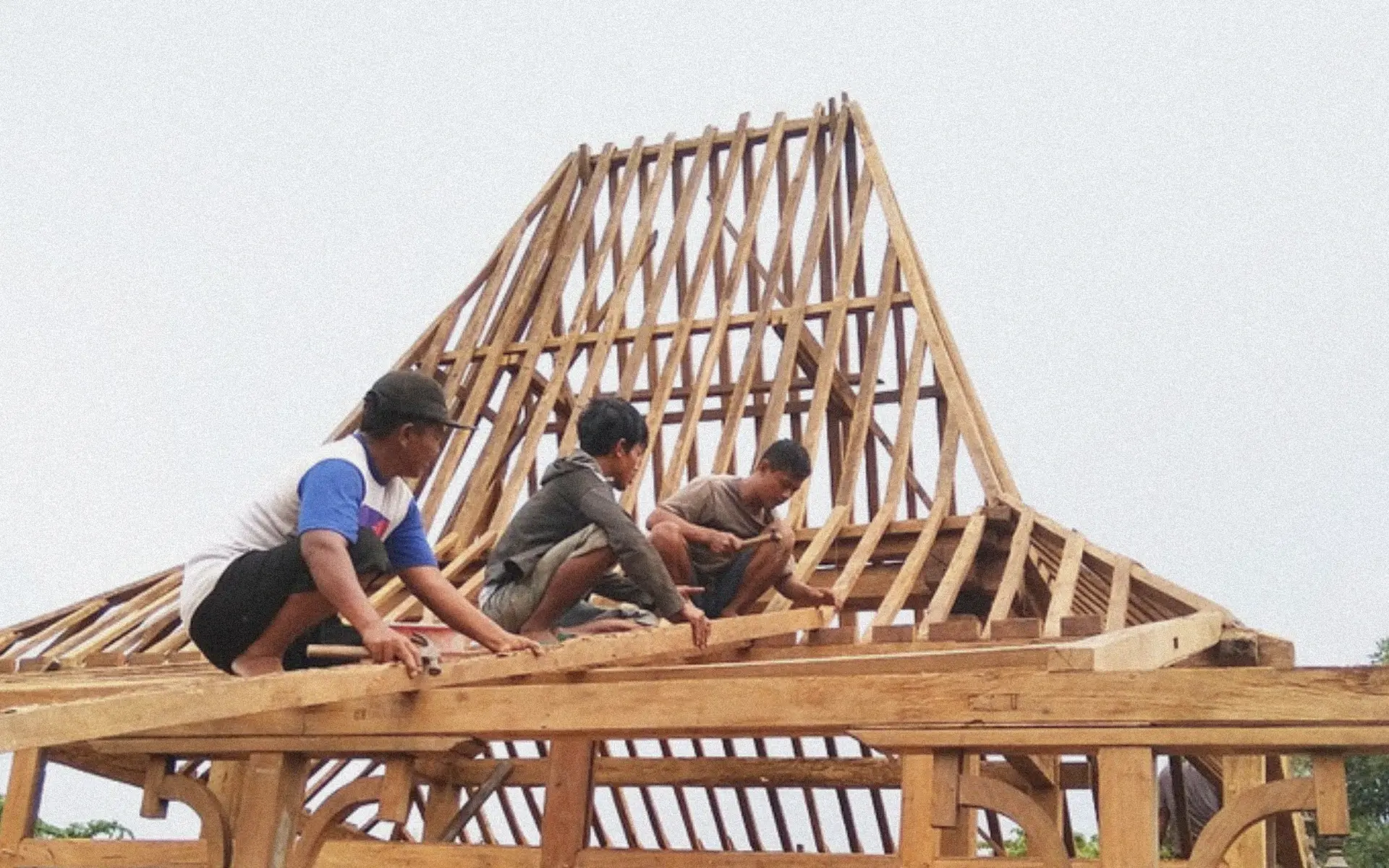
Image Source: Indonesia Expat
Costs and Timelines — What to Expect
Prices vary dramatically based on size, age, condition, and sourcing method:
Joglo structure: IDR 150–600 million Restoration work: IDR 100–300 million
Foundation, permits & installation: IDR 150–400 million Timeline: 4-8 months from sourcing to move-in ready
Breaking down that timeline: sourcing and planning (4-12 weeks), foundation and site preparation (4-8 weeks), plus installation and integration work (6-12 weeks). This isn’t a quick renovation — you’re essentially doing a specialized construction project that requires craftspeople who understand traditional joinery.
Bali dealers often cost more upfront but can save months of coordination and reduce risk. Java sourcing might offer better prices and selection, but factor in travel costs, time investment, shipping delays, and the potential for surprises.
Either way, the best joglos require serious patience. The perfect one rarely appears the moment you start looking, and rushing the installation process never ends well.
Final Thoughts — Building with Respect
Using a joglo isn’t just about getting a cool roof. You’re bringing home centuries of craftsmanship and culture. That means treating it with respect — don’t sand away decades of patina just because it looks “cleaner,” and resist the urge to Frankenstein together random antique parts.
Work with people who get it. Add modern touches if you want — glass walls, steel supports, floating platforms — but let the joglo be the star of the show.
When it’s done right, your house won’t just look different. It’ll feel different. Grounded. Like it belongs exactly where it is.
